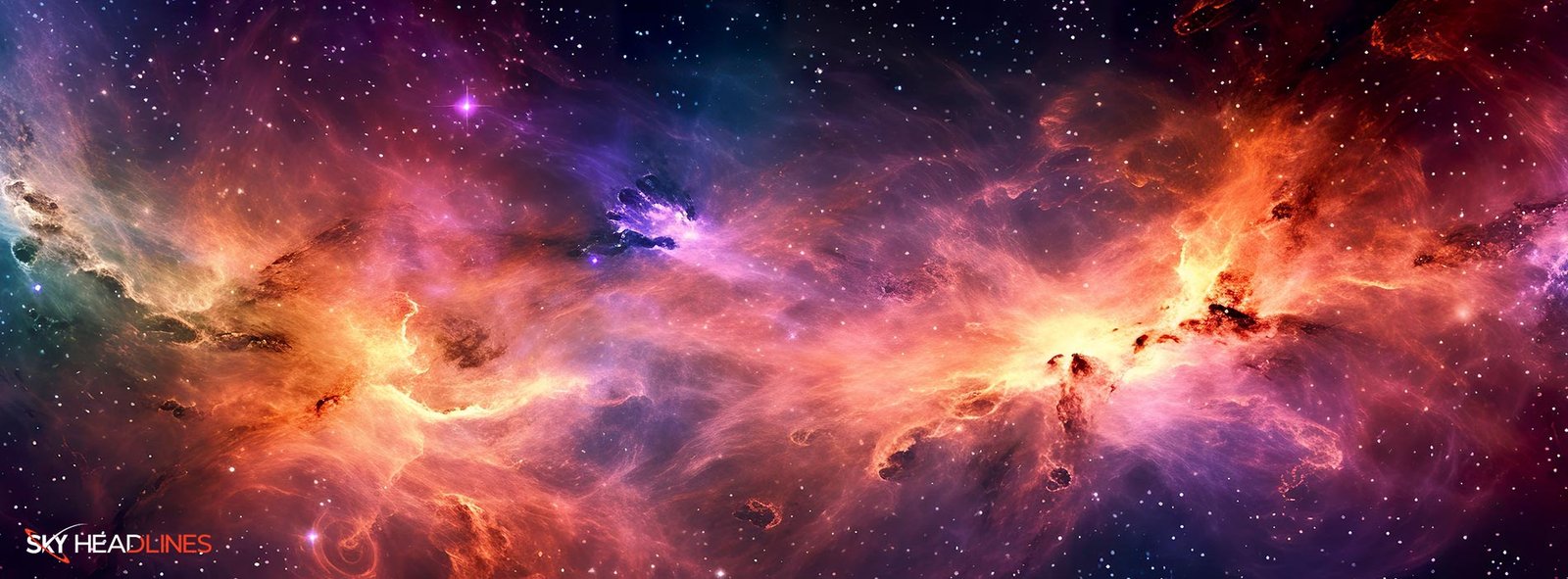The cosmos is a realm filled with numerous celestial phenomena, and one of the most intriguing among them is the Dark Nebula. Unlike their more famous counterparts, the bright, glowing emission nebulae, dark nebulae are more enigmatic, cloaking themselves in veils of gas and dust. They don’t produce their own light; instead, they are identified by the way they obscure the light of objects behind them. In this article, we’ll delve deep into the fascinating world of dark nebulae, exploring their formation, characteristics, and significance in the broader cosmic picture.
What is the dark nebula?
Dark nebulae are regions of interstellar space that contain a high concentration of dust and gas. Unlike bright nebulae, which are illuminated by the stars within or nearby, dark nebulae are not lit up. They are often observed as dark patches against a brighter background, such as a glowing gas cloud or a field of stars.
These dark nebulae are essentially “stellar nurseries,” places where new stars can form. The dense gas and dust provide the necessary conditions for the birth of stars through the process of gravitational collapse. Once enough mass accumulates in a particular region, it can trigger the formation of a new star.
The dust in dark nebulae is so thick that it absorbs and scatters light, making it difficult for telescopes to peer inside them using visible light. However, astronomers use other wavelengths like infrared to study these fascinating regions.
What is an example of a dark nebula?
Dark nebulae, while elusive by nature, are fascinating subjects of study in astronomy. Some of them have garnered considerable attention due to their unique characteristics or their role in groundbreaking scientific discoveries. Below are some famous examples of dark nebulae.
Barnard 68
One of the most studied dark nebulae, Barnard 68 is located in the constellation Ophiuchus. This nebula is remarkably dense and almost perfectly spherical, making it an ideal subject for studying the processes that lead to star formation.
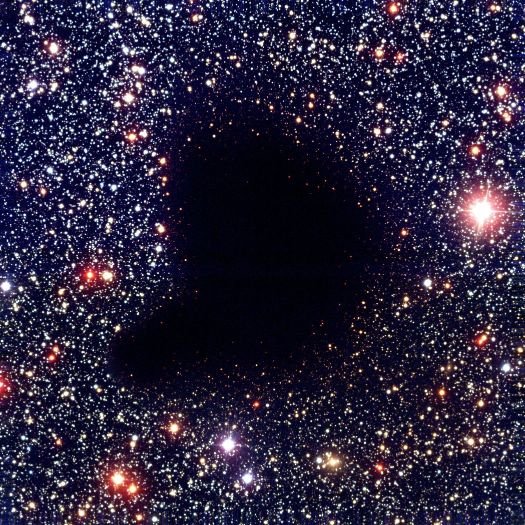
Horsehead Nebula
Perhaps one of the most iconic images in astronomy, the Horsehead Nebula is a dark nebula located in the Orion Molecular Cloud Complex. It is so named because of its unique, horsehead-like shape and is often photographed against the backdrop of the bright emission nebula IC 434.
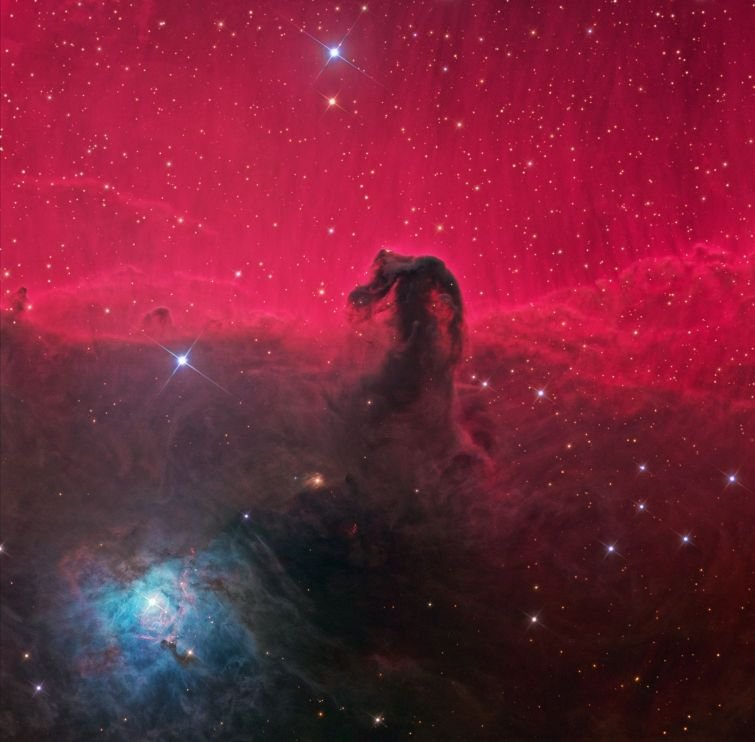
Pipe Nebula
Located also in the constellation Ophiuchus, the Pipe Nebula is significant for its large, pipe-like structure. It’s a prime example of a dark nebula that’s relatively close to Earth, making it easier to study its properties and potential for star formation.
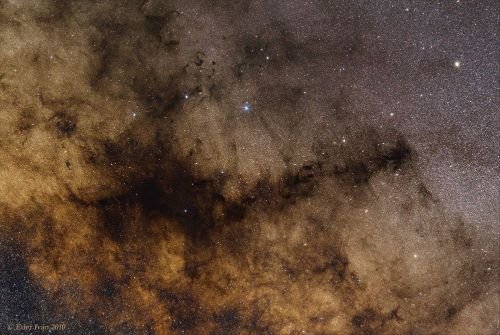
Coalsack Nebula
Found in the Southern Hemisphere and prominently visible from Earth, the Coalsack Nebula is one of the most easily recognizable dark nebulae. It appears as a large, dark patch against the backdrop of the Milky Way and is located near the Southern Cross constellation.
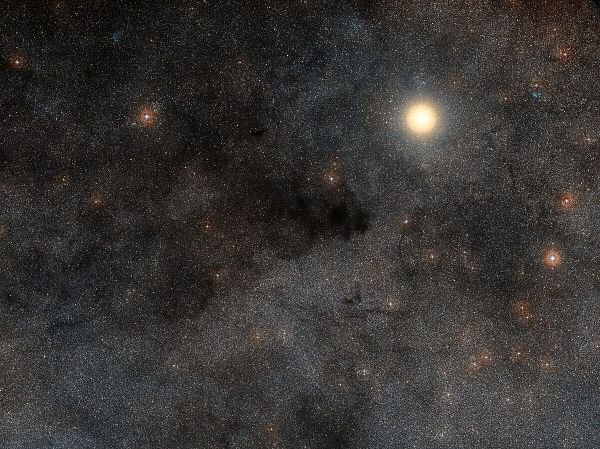
Lynds’ Dark Nebula (LDN) Catalog
Although not a specific dark nebula, the Lynds’ Dark Nebula catalog is a comprehensive list that includes several important and well-studied dark nebulae. These nebulae, often denoted by “LDN” followed by a number, have provided valuable data for various astronomical studies.
Boomerang Nebula
While not strictly a dark nebula, the Boomerang Nebula deserves mention due to its extreme characteristics. It is considered the coldest known place in the Universe, with temperatures measured below even that of the cosmic background radiation. Its unique conditions offer insight into the extremities possible within nebular formations.
How is a dark nebula formed?
Dark Nebulae: Formation and Structure
Dark nebulae are intriguing components of the interstellar medium, acting as both absorbers of light and nurseries for star formation. Understanding their formation and structure is crucial for grasping the complex life cycle of stars. This article delves into the intricacies of dark nebulae, exploring how they form and what they are made of.
Formation of Dark Nebulae
Origin in Molecular Clouds
Dark nebulae often originate within larger structures known as molecular clouds. These are vast, cold regions filled with gas and dust that provide the initial conditions for dark nebulae to form.
Cooling and Gravitational Contraction
Specific regions within molecular clouds experience cooling and start to contract under their own gravitational pull. This initiates the formation process of a dark nebula.
Increasing Density
As contraction continues, the density of the gas and dust within these areas increases. This augmented density further intensifies the gravitational forces, attracting more material to the region.
Light Absorption
The accumulated dust particles in these dense regions become effective at absorbing and scattering visible light, rendering the nebula “dark” in appearance.
Precursors to Star Formation
Once a certain density threshold is reached, the conditions become ripe for star formation. Until then, the nebula remains dark and opaque to most forms of electromagnetic radiation.
Structure of Dark Nebulae
Core
The core is the densest part of a dark nebula, where gravitational forces are at their peak. It is also the most likely zone for future star formation.
Envelope
Encircling the core is an envelope of less-dense gas and dust. This material gradually diffuses into the surrounding interstellar medium.
Filamentary Structures
Dark nebulae often exhibit filamentary structures—elongated, narrow concentrations of gas and dust that extend through the nebula.
Clumps
Within the nebula, localized regions known as “clumps” exhibit higher densities compared to their surroundings. These clumps can act as the initial seeds for star formation.
External Influences
The shape and structure of a dark nebula can be affected by external stellar events, such as supernovae. Such events can compress the nebula, potentially triggering a new cycle of star formation.
Role of Dark Nebulae in Star Formation
Understanding the role of dark nebulae in star formation is pivotal to the study of astrophysics and cosmic evolution. These nebulae serve as fertile grounds for the birth of new stars, thereby playing an essential part in the life cycle of celestial bodies. This article aims to illuminate the intricate roles that dark nebulae play in the process of star formation.
Preliminary Conditions for Star Formation
Gas and Dust Aggregates
Before star formation can occur, a conglomeration of gas and dust needs to reach a critical density. Dark nebulae provide the requisite environment, acting as reservoirs of these essential materials.
Gravitational Instability
For star formation to initiate, a region within a dark nebula must experience gravitational instability. This instability leads to localized collapse, further increasing the density and setting the stage for stellar birth.
Phases of Star Formation within Dark Nebulae
Protostellar Phase
The initial phase of star formation within a dark nebula is the formation of a protostar—a concentration of gas that has begun to experience nuclear fusion at its core. The protostar continues to gather mass from the surrounding nebula, growing in size and energy output.
Main Sequence Phase
After reaching a certain mass and completing the accretion process, the star enters the main sequence phase. During this period, the star becomes stable and begins to emit light, gradually clearing away the surrounding nebular material.
Stellar Evolution and Nebular Transformation
As the star ages, it undergoes various evolutionary stages, which can result in phenomena like supernovae. These events can significantly impact the original dark nebula, either dispersing it entirely or triggering new cycles of star formation within it.
Regulatory Mechanisms
Feedback Processes
The newly-formed stars often have a feedback effect on their natal nebulae. Stellar winds and radiation pressure can either compress other parts of the nebula, triggering subsequent star formation, or disperse the gas and dust, inhibiting further stellar births.
Cosmic Rays and Magnetic Fields
Cosmic rays and magnetic fields within the dark nebula also play a role in regulating the process of star formation. They can either stabilize or destabilize regions within the nebula, thus influencing the rate at which new stars are formed.
Observation and Exploration of Dark Nebulae
Dark nebulae present unique challenges for astronomical observation due to their opacity in the visible spectrum. However, advancements in technology and observational methods have offered new avenues for exploring these enigmatic structures. This article outlines various techniques and instruments used in the observation and exploration of dark nebulae.
Traditional Optical Telescopes: Limitations
Absorption of Visible Light
Traditional optical telescopes, which rely on visible light, have limitations when it comes to observing dark nebulae. The dense clouds of gas and dust in these nebulae absorb visible light, making them appear as voids against brighter backgrounds.
Inability to Penetrate
Due to their opaque nature, dark nebulae prevent optical telescopes from viewing internal structures or any objects that may lie behind them.
Advanced Observational Techniques
Infrared Astronomy
Infrared telescopes can penetrate the dense clouds of gas and dust, allowing astronomers to study the internal structures of dark nebulae. This is especially useful for observing the early stages of star formation within these nebulae.
Radio Astronomy
Radio waves can also pass through the obstacles that impede visible light, providing another means of probing dark nebulae. Radio telescopes are often used to study the molecular composition of these structures.
Spectroscopy
Using spectroscopy, astronomers can analyze the light that does manage to escape from or pass through a dark nebula to determine its composition. This provides insights into the elements and molecules present, which in turn gives clues about the nebula’s history and potential for star formation.
Exploration Missions
Space Telescopes
Instruments like the Hubble Space Telescope, although primarily designed for optical observation, have instruments capable of infrared imaging. This allows for detailed studies of dark nebulae from above Earth’s atmosphere.
Future Missions
Ongoing advancements in telescope technology and planned space missions aim to deploy even more sophisticated instruments capable of peering into dark nebulae. These missions may provide unprecedented details about their structure and role in star formation.
Citizen Science and Amateur Astronomy
Advancements in consumer-grade telescopes and imaging technology have enabled amateur astronomers to contribute to the study of dark nebulae. Collaborative projects often harness the power of crowd-sourced data to gain additional insights.


